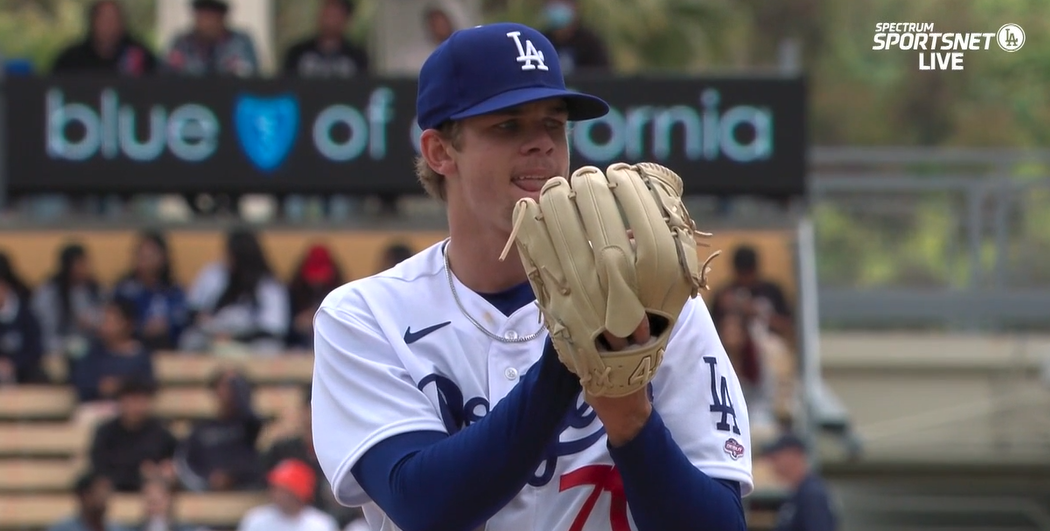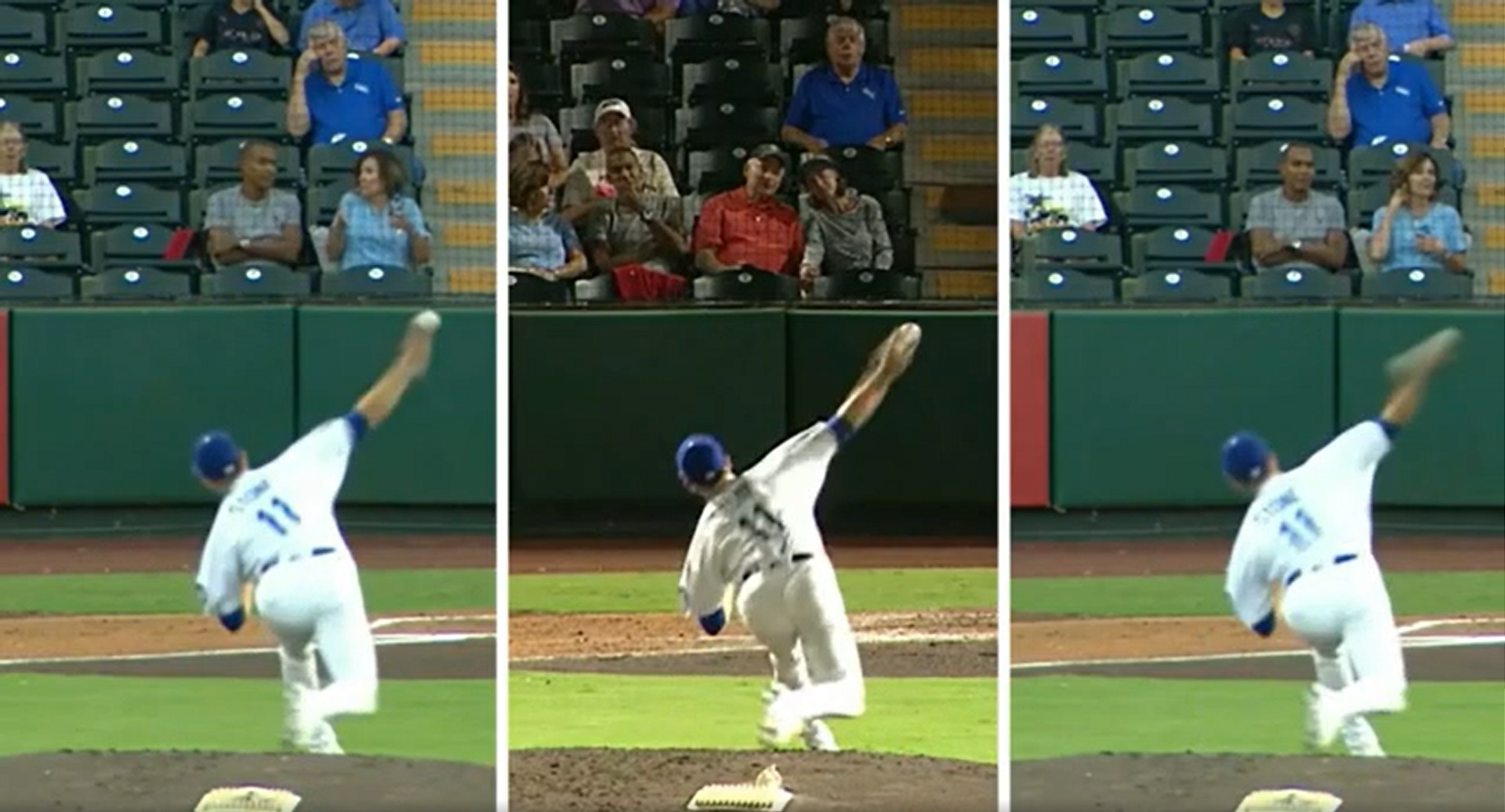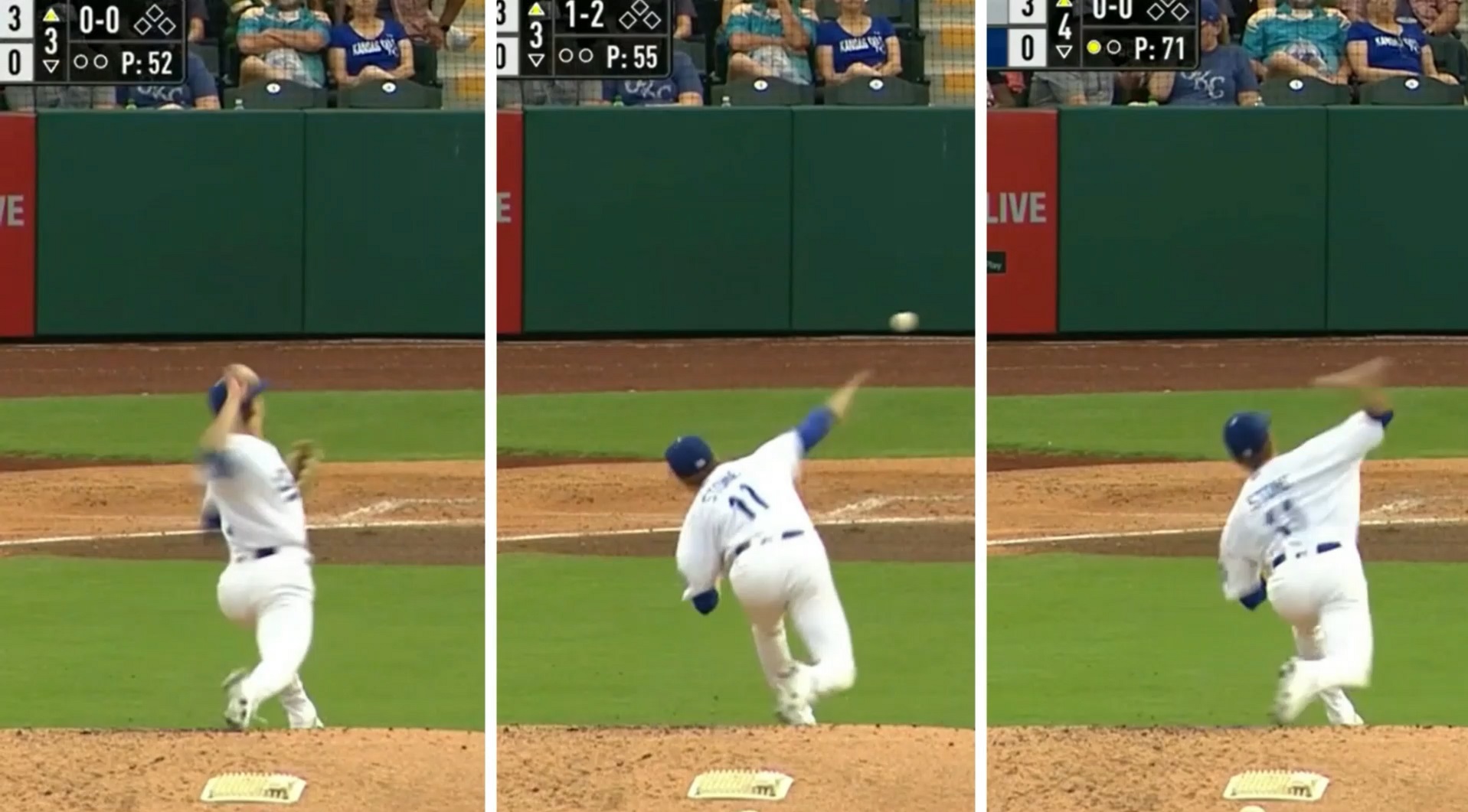Gavin Stone had an exceptional 2022 season. The then 23-year-old hit three different stops in the Dodger farm system (High-A, Double-A, and Triple-A), and the 6’1 righty dominated all the way through. He led all qualified minor leaguers at Low-A and higher in both ERA and FIP (1.48 and 2.44, respectively), while racking up 168 Ks and just 44 BBs in 121.2 IP. By the time the offseason prospect lists were released, Stone went from being in nobody’s top 10 rankings in the Dodger system to a consensus top 6 prospect, as well as a consensus top 100 prospect in the game. Expectations for 2023 were, justifiably, sky-high.
A little over two months into the 2023 season, it has been a struggle for the now 24-year-old, as an ERA of 5.08 with Oklahoma City and 14.40 with the Dodgers will attest.
So, what gives? What could be dragging down a pitcher who was so recently dominant to this degree? Let’s take a look.
======
First of all, I’d like to look at part of what made Gavin Stone so good in 2022. One of the biggest standout aspects to me was consistency with what is a pretty athletic delivery. Stone leveraged his 6’1, nearly 200 lbs frame to average 95+ in his late-season stint with Oklahoma City, getting his lower half well-involved with a solid hip hinge that helps keep his release point on the lower side (in the range of 5’7). That led into good hip to shoulder separation, which helped him accelerate through the ball.
Across the various prospect outlets, you’ll find that while nobody is mistaking him for Greg Maddux, his command grades consistently fell in the slightly below average (45) to slightly plus range (55). Both FanGraphs and Keith Law were the lowest on him at present (45), but both offered that he repeats his delivery well enough to be average to slightly plus in the future.
Here’s what the 2020 5th round pick looked like with Oklahoma City last September. From left to right, it’s fastball/changeup/slider, full speed, and then slowed down, with two pauses:
The first pause is right at separation, to display the similarity in timing, posture, head level relative to the padding, as well as the position of his lower half (and here’s a still below just to drive the point home). While there are minute differences, he is basically in lock step, pitch type to pitch type.
If you are consistent in the first part of your delivery, the better your odds are of continuing to be consistent all throughout, as the second pause denotes:
Again, while you can pedant your way through this and the slider release indeed a frame behind, ultimately it’s well within the realm of consistent from pitch to pitch.
——
And now, on to 2023, where things are a little less great. Same deal, FB/CH/SL, full speed, and then slowed down with two pauses:
The first pause is again right at separation (for the fastball, at least), to display the lack of similarity in timing, posture, head level relative to the padding, as well as the position of his lower half. Stone is very clearly getting his delivery going much sooner with his changeup (and to a lesser degree with the slider), sinking deep into his hip hinge well ahead of when he does on his fastball, as evidenced by the height of his head. His leg swing is just getting underway with his secondaries, with the left foot angled up as it begins to come through, again, ahead of where he is with the fastball.
As before, here’s a still so you can inspect all of these easily:
What followed was the opposite of what we saw in 2022 — if you are inconsistent with the first part of your delivery, the likelihood of finding consistency at release is rather low. In fact, the farther down the chain you go, the more you deviate from pitch to pitch:
The changeup is already out, the slider is about two frames from being at release, and the fastball is well, well behind.
There is one other mechanical issue that could be negatively impact command — though it is difficult to tell 100% from this angle, Stone appears to be landing very heel-first on his changeup, and even rotating on the heel it a bit, whereas he appears to land heel-first but continues to get the ball of his foot down without heel rotation on his other two pitches. The former can halt momentum and negatively impact command due to a jarring landing, and the latter is a more athletic landing, better positioning the athlete to get into a strong lead leg block, which can help to successfully gain leverage and efficiently generate more oomph through an efficient transfer of momentum. If this setup and transfer also changes pitch to pitch, that’s more added variance to further disrupt the chain.
——
Now that we’ve gone through all that, here’s what ’22 and ’23 look like, all synced up. ’22 on top, ’23 on the bottom:
In ’23, Stone appears to be lagging just a little with the fastball, but the changeup is well ahead of the crowd. As mentioned above, he aggressively gets into his lower half sooner, and everything takes off from there. Forget about trying to throw a roughly 3″ object consistently into a roughly 3″ hole that is 60’6″ away from you — if you are inconsistent like this, pitch to pitch, just dividing the plate into halves can be rather challenging.
======
The upshot is that all of this is fixable. Heck, his release points for his various pitches, while roughly an inch lower than they were in 2022, have a similarly tight grouping despite the timing issues. His various spin axes are within 6 minutes of where they stood in 2022 as well. He’s like, right there.
From my very comfortable, dork-ass, baseball command center, it is easy for me to say “hey, dude, fix that timing thing”. The reality is, timing and feel can be some of the more difficult things to re-align and regain. If the timing has been off for a minute, then changing things can feel awkward, and awkward is hard to trust, and trust issues break down relationships, even (especially) those between a ballplayer and a 3″ pearl.
I think Gavin Stone is plenty athletically gifted enough to dial this back in eventually, and the ceiling of a 2/3 starter is intact. I don’t know when that will happen, and the timing of this issue is unfortunate with the big club having only four healthy-ish starting pitchers at the moment. So obviously, the sooner he gets locked back in, the better.
 Dodgers Digest Los Angeles Dodgers Baseball Blog
Dodgers Digest Los Angeles Dodgers Baseball Blog




